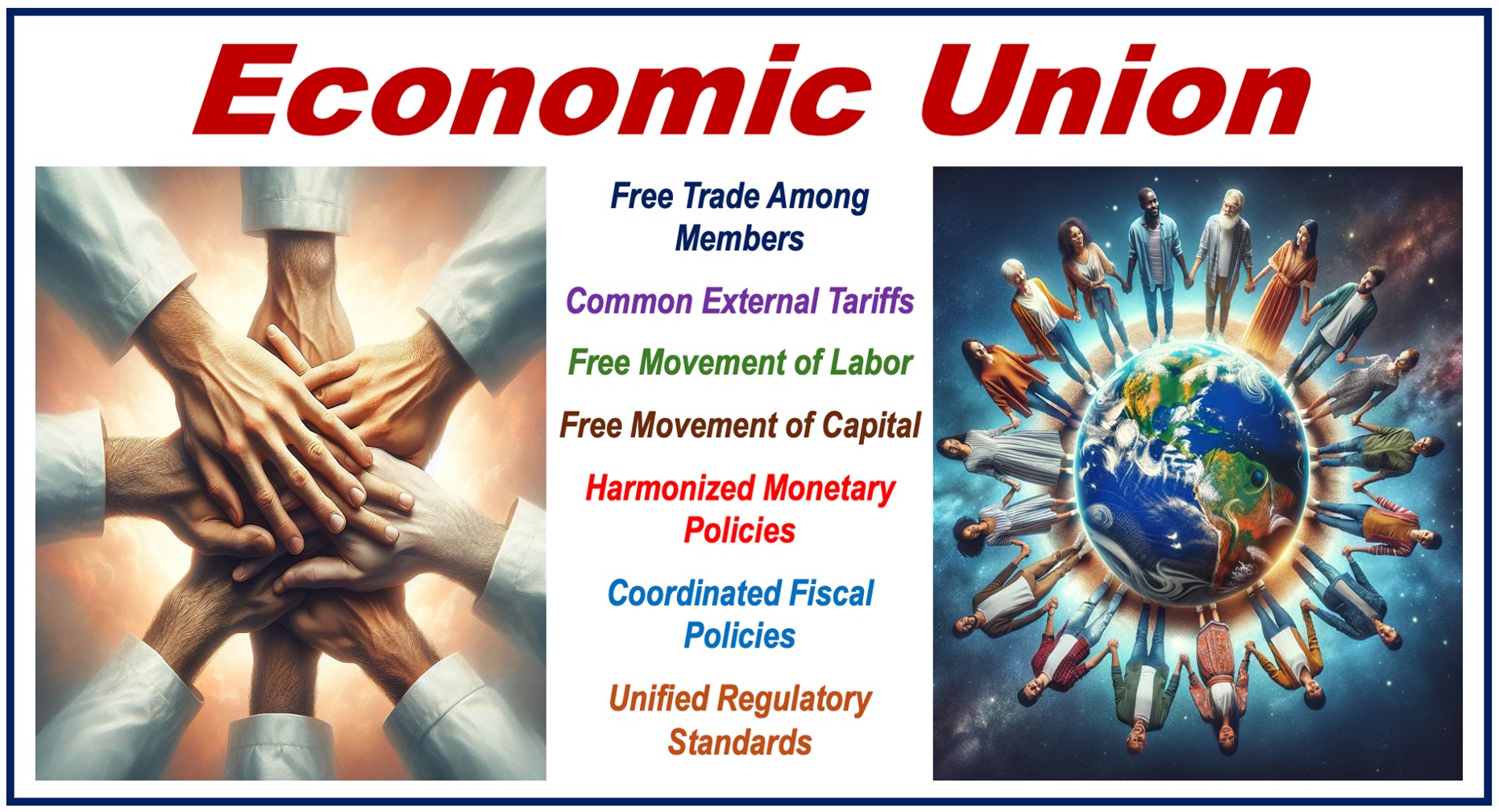What is an economic union?
If two or more countries agree to allow the free movement of goods, services, money, and people across their common borders, they have achieved an Economic Union. It is a combination of a common market and a customs union.
For countries aiming for economic integration, economic union is a significant step. This type of integration sometimes also includes the harmonization of fiscal policies, monetary policies, and regulations.
The term monetary policy refers to the control of the money supply and interest rates by central banks, while fiscal policy is all about government spending and taxation decisions.
IGI Global has the following definition of the term:
“A common market involving more than one nation based on a mutual agreement to permit the free movement of capital, labor, goods, and services. It may include fiscal and monetary policies among participating nations.”
Economic union – great for businesses
At its core, an economic union aims to create a single market. This means that products and services created in member states can move more freely from one country to another without tariffs, quotas, or other forms of trade barriers.
Businesses can expand abroad (into member states) with less red tape. Consumers benefit from a wider range of products and services at competitive prices.

Economic union – shared economic policies
Member states, in this type of union, share economic policies. This may include setting common policies on taxation, public spending (government spending), and the regulation of industries.
When their economic policies are aligned, they can work together more effectively to achieve economic stability, stimulate growth, respond to economic crises, and ensure a more cohesive and competitive market environment across member states.
Example of an economic union
The European Union (EU) is the best-known example of an economic union. The EU has 27 member states. They have implemented various policies to ensure the free movement of capital, goods, services, and people.
The EU is also a monetary union. Nineteen of the 27 member states use the euro as their country’s official currency. They are part of what we call the Euro Area or Eurozone.
Benefits and challenges
Not everybody is keen on their country fully integrating into an economic union. They voice concerns about certain disadvantages or risks. Let’s take a look at the main benefits and challenges:
Pros of an Economic Union
- Free trade among members
Boosts trade and economic growth by eliminating tariffs and quotas. - Mobility of labor
Fills skill gaps and reduces unemployment through free worker movement. - Economic policy coordination
Leads to stability and less currency fluctuation via policy harmonization. - Increased bargaining power
Strengthens global negotiating position through collective bargaining. - Scale economies and competition
Improves efficiency, innovation, and product quality by enlarging markets. - Harmonization of standards
Simplifies business operations by aligning regulations and standards.
Cons of an Economic Union
- Loss of sovereignty
Limits national policy flexibility due to shared economic policies. - Economic disparities
Risks widening the wealth gap between richer and poorer member countries. - Fiscal transfers
May cause tension over wealthier members supporting weaker economies. - Complex bureaucracy
Slows decision-making with increased regulation and bureaucratic processes. - Labor market challenges
Can lead to brain drain and pressure on services in more developed areas. - Vulnerability to economic shocks
Economic problems can easily spread among member countries.
5 states of economic integration
As you can see below, an “economic union” is number four of the five principal stages of economic integration. Let’s take a look at them:
Member states form a pact to remove tariffs on each other’s goods, while still setting their own trade policies externally.
Countries agree to implement a unified set of tariffs for imports from outside countries.
-
Single Market
Barriers are eliminated, enabling the unrestricted flow of goods, services, capital, and labor.
-
Economic Union
Countries align their economic strategies, including fiscal and monetary policies.
Member states adopt a common currency. In the European Union, 19 member states adopted the euro as their official currency – they achieved monetary union.
Summary
An economic union is much more than a free trade area. Apart from the free movement of goods and services, it also allows for the free movement of capital and people, as well as the coordination of economic policies and regulations among its members.

